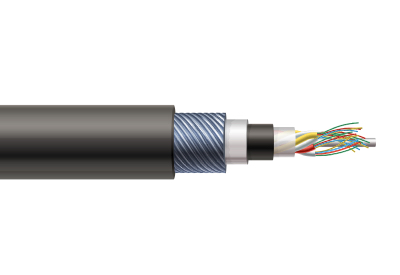Just Like Before, Only Better! An International Application by WAGO
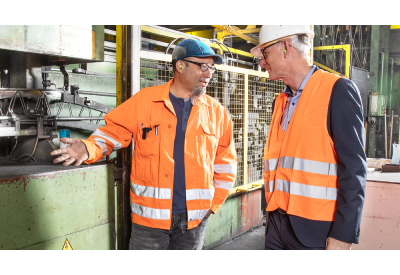
August 16, 2022
High-rise buildings in France, tunnels in Switzerland, prestressed concrete ceilings in Germany – one source of their stability is wire products from Kehl in Baden-Württemberg. Badische Drahtwerke GmbH (BDW) supplies reinforcing steel mesh, reinforcement cages, lattice girders and many other rebar and reinforcement products to the region and neighboring countries. When the machines used to produce lattice girders had to undergo a safety update, the engineers took advantage of the communication capabilities of an intelligent power supply from WAGO to improve process efficiency.
Reinforced concrete is one of the most important building materials in the world today. It is the first choice for any construction requiring tensile strength. The reinforcing steel used comes in the form of rebar, reinforcing mesh, lattice girders or reinforcing wire. On average, BDW supplies more than half a million metric tons of such steel products every year. It manufactures top-quality products with the latest production technology while meeting the highest occupational safety and environmental protection standards. With certified quality, environmental protection, and energy management procedures, BDW makes sure it always meets both its customers’ needs and all the regulatory requirements.
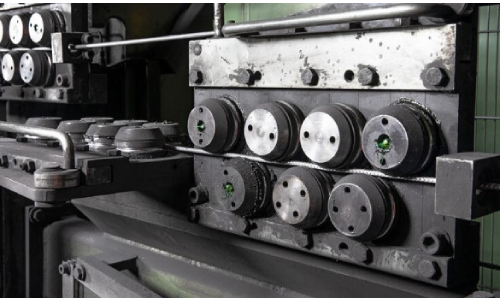
The heart of the production process for many different reinforcement products, many of them customized, is always steel wires between 4 and 25 millimeters thick. To create the reinforcement products by bending and joining the wires, the wires first need to be unwound from coils; only then can the straightening, bending, and cutting equipment do its work. The coils weigh tons, and care is required when unwinding them – the unwinding process needs to counteract the curve in the wire that the winding caused. In this straightening process, the torsion of the steel, the twisting in the longitudinal direction, plays an important role. This must not be too high for further processing.
Absolute Straightness for a Length of up to 15 Meters: Lattice Girders from Kehl
One of BDW’s most important product families is lattice girders: reinforcing elements consisting of parallel bars connected by diagonal bars arranged at a fixed distance. BDW sells lattice girders in many variants up to a length of 15 meters. They can be used to ensure the load-bearing capacity and usability of concrete slabs or to join prefabricated slabs and cast-in-place concrete. The diagonal bars are connected to the parallel bars, called chords, by resistance spot welding. Smooth, profiled, or ribbed steel wire is the basic material of such lattice girders. In Kehl, twelve machines produced these on a continuous line.
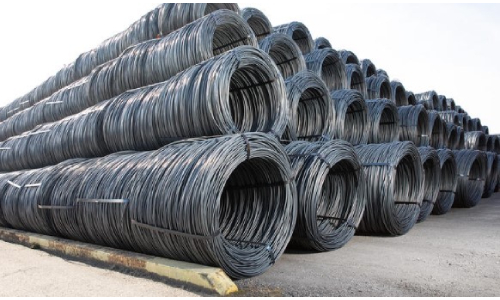
Particular attention is paid to the upper chord, whose residual stress contributes significantly to the straightness of the end product. “After unwinding and straightening, the upper chord is passed through a twisting machine again,” explains Paulo Luis, who is responsible for large machinery automation and optimization at BDW in Kehl. “The machine operators adjust the straightening rollers according to the material, cross-section geometry and initial curvature. They can see if they need to intervene to keep the girder from tipping or warping.”
For many years, the machine operators adjusted the spacing of the intermeshing rollers via a spindle using a handwheel. Modernization work to increase efficiency and occupational safety immediately presented Luis and his team with multiple challenges: “The straightening rollers were now located in the safety zone behind a protective grille,” he explains. “To operate the hand crank, the operators had to switch the machines from automatic to manual mode, open the grille, make adjustments, close the grille and switch back to automatic mode. If they opened it inadvertently, the entire line would go into emergency stop.”
Greater Safety Requires Rethinking
To make the processes more efficient and simpler, the decision-makers at BDW chose to implement the spindle movement with a 24 V motor in the future. This had far-reaching consequences: Since the diameter of the upper chord can range between 4 and 16 millimeters, depending on the product, and other parameters also need to be taken into account, it is not possible to specify one universal switch-off point for the motor that adjusts the straightening rollers via the spindle.
“With other straightening equipment, we use sensors to determine end positions,” explains Luis. “But in this case, the rollers are interlocked, and we run a wide variety of different wires through them, so that would have been extremely expensive.” The possible variants all had disadvantages, as he explains:
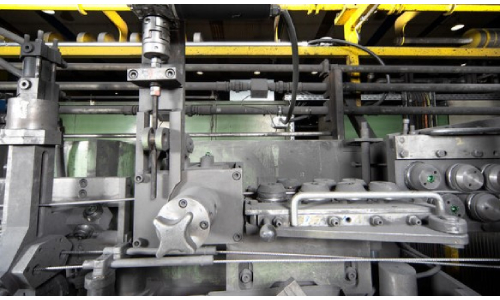
“For example, we would have had to install multiple sensors, including cables, in an area that places very high demands on the components in terms of vibration. Our next approach was a conventional motor protection switch. We rejected that option because every time it tripped, it would have required an electrician to acknowledge it at the control cabinet. That would have been totally unacceptable.”
The Power Supply Provides the Solution
Paulo Luis continued to work on these challenges, considering several possibilities:
“We quickly started to wonder whether we couldn’t perhaps determine the switch-off point on the basis of the current that the motor requires in order to move the spindle with the rollers,” recalls the automation specialist. He explains the idea further: “As soon as the current increases noticeably, this should clearly signal the end position. But that would have required us to install an additional ammeter on each machine.”
Ultimately, Josef Fleig demonstrated that this was not only the right approach, but even that it could be realized with a single device. The deputy manager of the WAGO sales office in Reutlingen is responsible for industrial customers in southern Germany, so he has been the contact person for BDW for years. “After Mr. Luis explained what they needed the power supply for, we continued to talk through the approach together and developed a solution using the WAGO Pro 2 Power Supply that goes far beyond a conventional power supply application. As soon as the straightening rollers press against the upper chord as it passes through, the motor needs to apply a specific force according to the type of material and wire thickness. This is proportional to the current it draws. Thus, we can determine a value empirically and use it to identify the end position; we then use this value as the Pro 2’s overload warning threshold.”
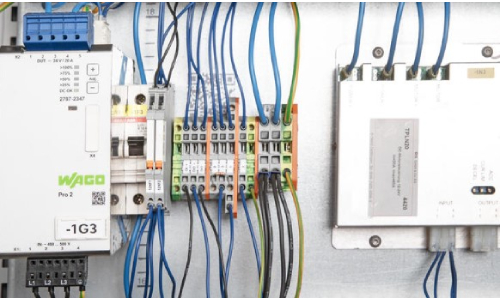
WAGO’s Pro 2 Power Supplies offer many useful functions and are able to continuously monitor and report the output voltage, output current, boost and overload behavior, switch-on behavior, signaling, warning thresholds and much more.
Novel applications can be implemented using communication modules that communicate with the automation and control level via the IO-Link, Modbus RTU or ETHERNET protocol.
“At BDW, the power supply unit checks whether the output current is greater than the overload warning threshold, and the detected overcurrent is reported to the controller via the Pro 2’s digital output,” says Fleig in summary.
The operator can then acknowledge this message via the machine’s touch panel.
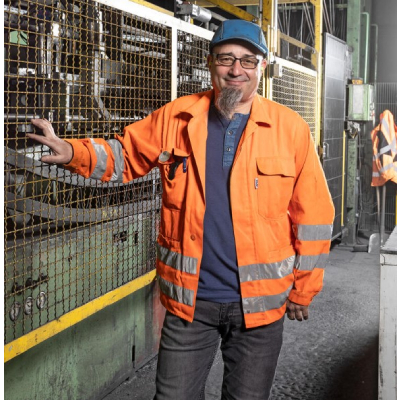
“The solution is simple but ingenious,” says Luis with satisfaction: “We shifted operation of the straightening rollers from the safety area to the control station and designed the process to be not only safer, but also more efficient.” Additional equipment is unnecessary, as Fleig points out: “The customer was able to implement this efficient solution directly on the machine. Besides the motor and the intelligent Pro 2 Power Supply, no other components are required.”
After Luis convinced himself through a test setup that the solution works reliably, he and his team were able to convert five machines for lattice girder production: “This way, we protect not only our machine operators, but also the motors – and all using a power supply that we would’ve needed anyway!” He adds with enthusiasm:
“Everything runs exactly like it did before, just much better and more intelligently – we use the power supply for something we had initially only considered in theory. But these capabilities and this flexibility are exactly what smart devices now offer.”
Fleig shares his customer’s satisfaction: “Thanks to its communication capabilities, the Pro 2 actually offers much greater potential than a simple power supply. There are countless opportunities to use the monitored current value as a starting point for optimizations and efficiency improvements.”
Let Power Communicate!
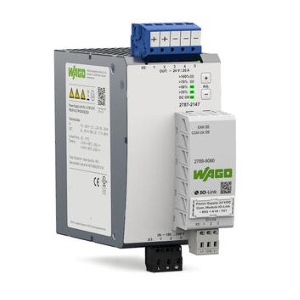
The WAGO Pro 2 Power Supply: Control cabinets are undergoing a transformation, with both quantity and quality demands constantly increasing. Greater networking, rising energy costs and growing customization require smaller, more economical, faster and more flexible solutions in control cabinets.




